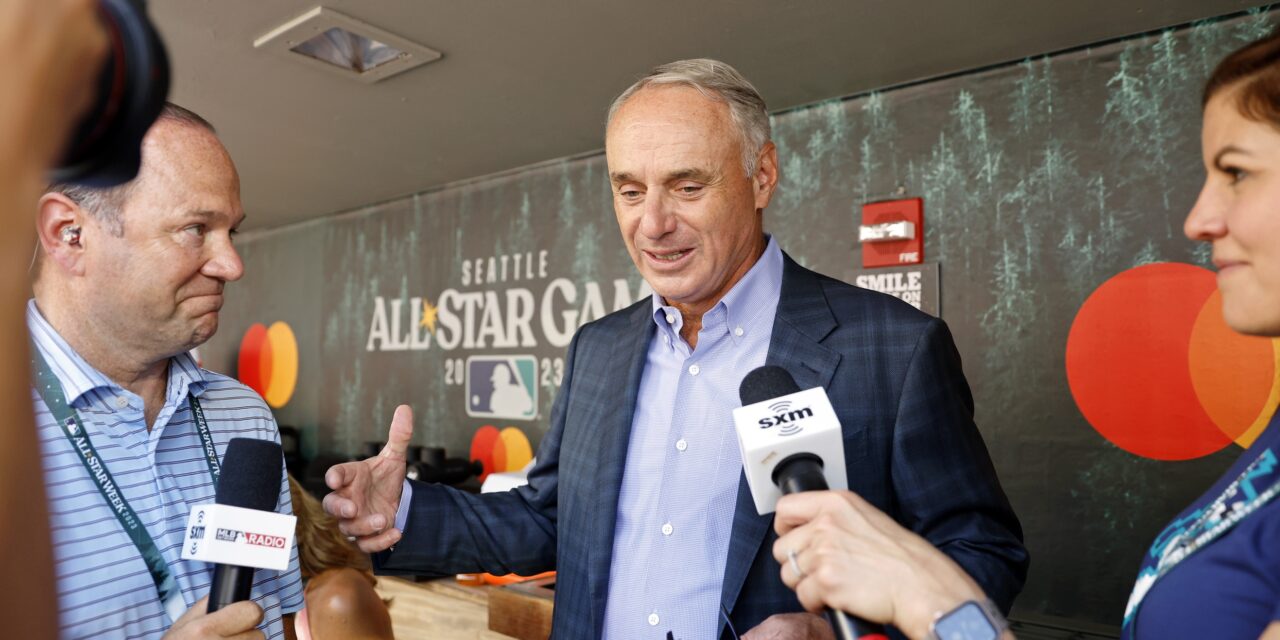As written on MMO, there will be additional rule changes for the 2024 MLB season, including modifications to some of the 2023 rule changes. The new and modified rules will pertain to the pitch clock, pitching changes, and mound visits. Let’s look at the “why” behind these adjustments.
The Pitch Clock
In 2024, pitchers will have 18 rather than 20 seconds to begin their pitching motions when there are runners on base. The average time of games in 2023 was two hours and thirty-nine minutes, down 24 minutes from the 2022 season. However, game time increased by seven minutes in September versus April, and MLB became concerned that this could be a trend. This should not have a material impact because, according to CBSsports.com, on average, pitchers began their deliveries with 7.3 seconds remaining on the clock with runners on base in 2023. Clock violations with runners on base comprised only 14% of all violations last year, so this rule modification is a bit curious. However, we will see an 18-second clock when there is traffic on the bases next season.
Pitching Changes
This is a new one. In 2024, pitchers who warm up before the start of an inning will have to face at least one batter in the inning. According to the cited article, there were 24 instances last season where the pitcher who warmed up between innings was replaced before throwing a pitch (adding approximately three minutes of dead time per event). There were two such instances during the 2023 World Series. Once again, this does not seem like a great opportunity to shorten games, yet we will see this rule next season.
Time for Relievers
This rule change seems a little over-engineered. If a new pitcher steps onto the warning track with less than 2:00 remaining on the inning break clock, the clock will reset to 2:00 rather than 2:15, as was the case in 2023. Once again, it does not seem like this is a common occurrence, and therefore, this rule will probably not result in significant time savings.
Widening the Running Lane to First Base
The running lane to first base will be widened to include the distance from the foul line to the edge of the infield. This adds 18 to 24 inches of running space, reducing the likelihood of a call of runner’s interference. The variable distance is a function of synthetic and natural grass surfaces, which have different lengths from the foul line to the edge of the infield grass or turf. This seems like a good rule change, however, when at certain angles, infielders (especially catchers) will have to be extra careful before making a throw to allow themselves to be able to complete a putout at first base. We may see more throws hit runners but fewer interference calls. The net impact of this on the game is to be determined.
Mound Visits
It’s easy to forget that mound visits are still tracked. In 2024, four mound visits will be allowed rather than five. An extra visit will awarded after the eighth inning if the team has no more visits remaining. Clubs averaged only 2.3 mound visits per game in 2023. Last season, 98% of games would not have exceeded a limit of four mound visits. Once again, this is an area that does not seem to offer the potential for a noticeable impact on game length.
All told, we will see some differences in the 2024 season, most of which are intended to further quicken the pace of play. Individually, the rule changes may not amount to much. Perhaps collectively, the new rules may impact the average game time.
An important note is that these rule changes were voted on by MLB’s Competition Committee. That committee has six owners, four players, and an umpire. The players voted against all of the rule changes, The owners got their way, and the Major League Baseball Players’ Association is not happy. Here is the head of the MLBPA, Tony Clark, from the cited article:
“This afternoon, Player Representatives voted against the 2024 rule changes proposed by the Commissioner’s Office. As they made clear in the Competition Committee, Players strongly feel that, following last season’s profound changes to the fundamental rules of the game, immediate additional changes are unnecessary and offer no meaningful benefits to fans, Players, or the competition on the field. This season should be used to gather additional data and fully examine the health, safety, and injury impacts of the reduced recovery time; that is where the focus should be.”
There are three more seasons to go under the current collective bargaining agreement. The players opposed most of last year’s rule changes, too. Owners are already hinting at their desire for a salary cap. It’s something to keep in mind.
















